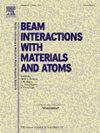基于空间中子谱仪的中子谱重建方法研究
IF 1.4
3区 物理与天体物理
Q3 INSTRUMENTS & INSTRUMENTATION
Nuclear Instruments & Methods in Physics Research Section B-beam Interactions With Materials and Atoms
Pub Date : 2025-04-25
DOI:10.1016/j.nimb.2025.165712
引用次数: 0
摘要
由于缺乏先验信息,空间中子能谱的测量在中子探测器的谱展开中面临着很大的不确定性。本文提出了一种将反向传播(BP)神经网络与迭代或最大熵技术相结合的频谱展开方法,可有效提高空间中子能谱重建的精度。传统的基于神经网络的展开方法往往受到可用数据集规模小的限制,这限制了它们的准确性。本文通过对常见中子能谱的线性叠加对神经网络数据集进行扩展,获得了较好的重构效果。但该模型对噪声的鲁棒性较差,不能有效处理噪声干扰。针对这一问题,本研究进一步改进了训练过程,考虑了噪声的影响,增强了模型在噪声环境下的性能,最终获得了更理想的频谱重建结果。最后,基于神经网络作为先验谱,结合迭代法和最大熵法,提出了一种适用于空间中子星谱的中子谱反褶积方案,该方案能够有效地重建中子谱,为实际应用提供了可行的解决方案。本文章由计算机程序翻译,如有差异,请以英文原文为准。
Research on neutron spectrum reconstruction methods based on space neutron spectrometer
The measurement of space neutron energy spectra faces significant uncertainty in spectrum unfolding for neutron detectors due to the lack of prior information. This work proposes a spectrum unfolding method combining a Backpropagation (BP) neural network with iterative or maximum entropy techniques, which can effectively enhance the accuracy of space neutron energy spectrum reconstruction. Traditional neural network-based unfolding methods are often limited by the small size of available datasets, which restricts their accuracy. This work expands the neural network dataset through linear superposition of common neutron energy spectra, achieving better reconstruction results. However, the model showed poor robustness to noise and could not effectively handle noise interference. To address this, the study further improved the training process by considering the impact of noise, enhancing the model’s performance in noisy environments, and ultimately achieving more ideal spectral reconstruction results. Finally, based on the neural network as a prior spectrum, combined with iterative methods and the maximum entropy method, a neutron spectrum deconvolution scheme suitable for space neutron spectrometer was proposed, which can effectively reconstruct the neutron spectrum and provide a feasible solution for practical applications.
求助全文
通过发布文献求助,成功后即可免费获取论文全文。
去求助
来源期刊
CiteScore
2.80
自引率
7.70%
发文量
231
审稿时长
1.9 months
期刊介绍:
Section B of Nuclear Instruments and Methods in Physics Research covers all aspects of the interaction of energetic beams with atoms, molecules and aggregate forms of matter. This includes ion beam analysis and ion beam modification of materials as well as basic data of importance for these studies. Topics of general interest include: atomic collisions in solids, particle channelling, all aspects of collision cascades, the modification of materials by energetic beams, ion implantation, irradiation - induced changes in materials, the physics and chemistry of beam interactions and the analysis of materials by all forms of energetic radiation. Modification by ion, laser and electron beams for the study of electronic materials, metals, ceramics, insulators, polymers and other important and new materials systems are included. Related studies, such as the application of ion beam analysis to biological, archaeological and geological samples as well as applications to solve problems in planetary science are also welcome. Energetic beams of interest include atomic and molecular ions, neutrons, positrons and muons, plasmas directed at surfaces, electron and photon beams, including laser treated surfaces and studies of solids by photon radiation from rotating anodes, synchrotrons, etc. In addition, the interaction between various forms of radiation and radiation-induced deposition processes are relevant.

 求助内容:
求助内容: 应助结果提醒方式:
应助结果提醒方式:


